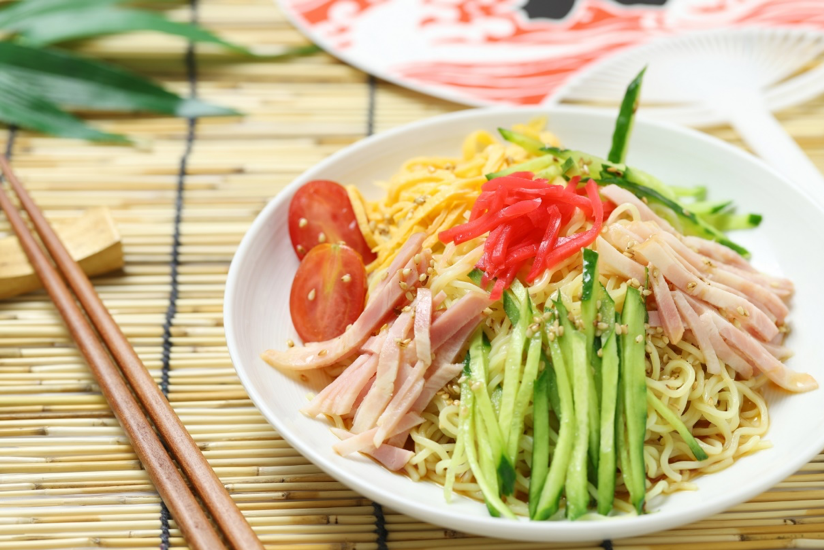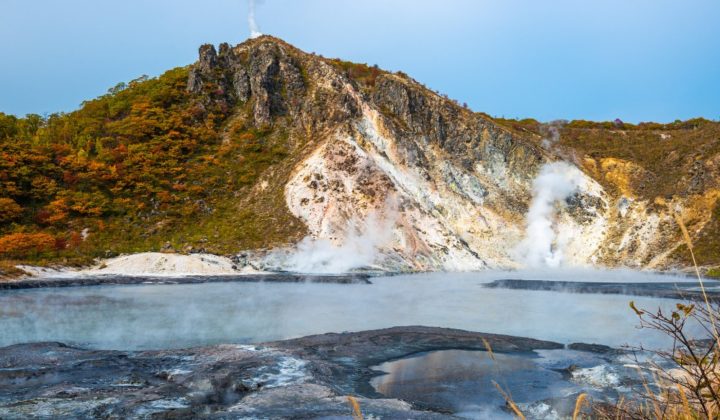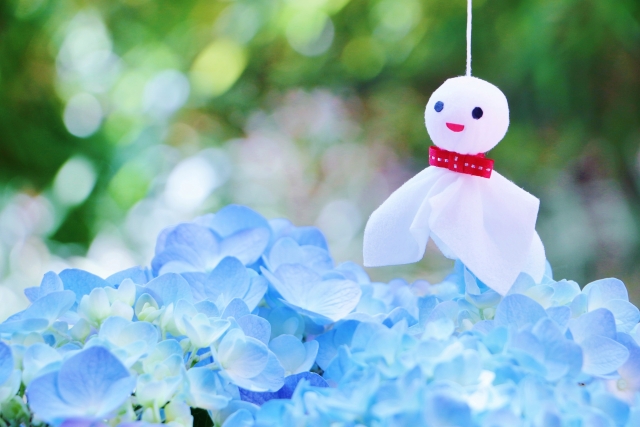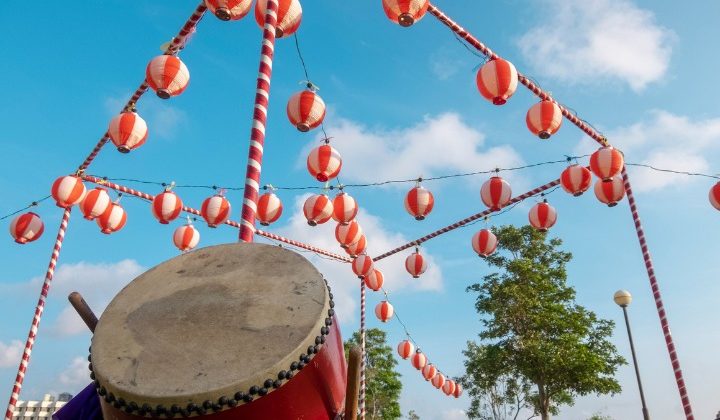This post is also available in:



Japanese summer is very hot and humid, but there are many delicious foods you can enjoy only during summer. These summer foods not only taste good but are also rich in nutrients – so they protect you from summer heat fatigue.
I will introduce to you some of the major dishes in Japan that you should definitely try during your stay here in the summer. Now let’s take a look at them!
1. Zarusoba (Cold buckwheat noodles)
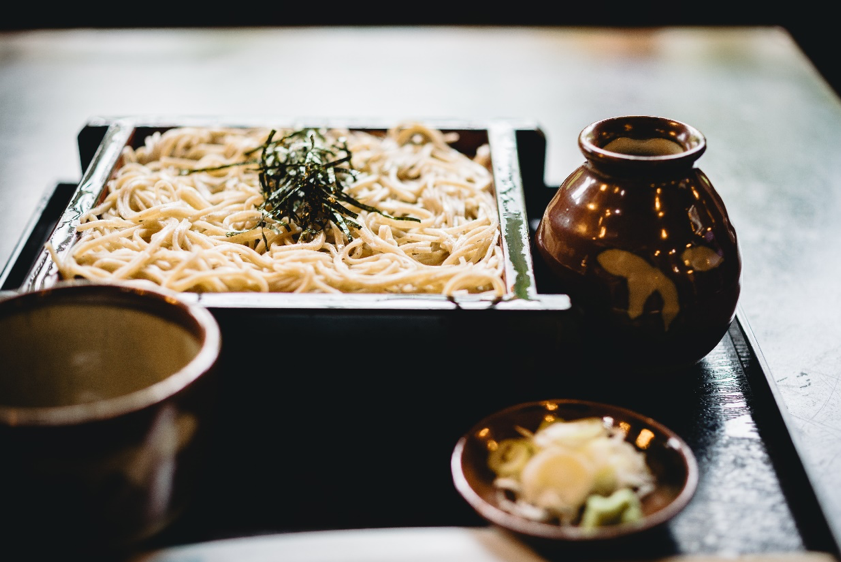
Zaru-soba is cold Soba noodles served on a bamboo tray that look refreshing and Japanesy. You dip the noodles into the dipping soup that comes in a separate bowl and slurp up the noodles. When you have Soba at a Soba restaurant, they would serve Soba-yu (Soba cooking hot water) after you finish eating noodles. Soba-yu is nutrient rich and also very tasty. You pour Soba-yu into your dipping soup bowl until the mixed soup becomes the best taste for you. You can enjoy the rich scent and taste of soba with some spices in the liquid if you want.
My recommendation is Zarusoba with Tempura, so that you can enjoy the cold soba and the delicious hot and crispy tempura. Tempura is also a Japanese dish of vegetables and seafood that are battered and fried.
Soba is rich in amino-acids, rutin and Vitamin B1, B2. Soba is good food to protect your body from summer heat fatigue! Rutin is helpful in lowering blood pressure and straighten your veins. Soba also has an antioxidant effect that keeps your body young which is very attractive, especially for ladies!
*Soba sometimes causes serious allergy for some people, so please make sure you are ok before trying them.
2. Zaru-Udon (Cold Udon Noodles)
Zaru-udon is cold Udon noodles served on a bamboo tray with a separate bowl of dipping soup that you dip the noodles into like zarusoba. It also looks cool and Japanesy as much as Zaru-soba. Udon noodles are thick noodles made of wheat flour. I also recommend cold Zaru-udon with hot and crispy Japanese Tempura.
Udon is easier to be digested and contains less fiber compared to soba. So it is converted into energy quite fast.
3. Hiyashi-Chuka (Cold Japanese style Chinese noodles)
Hiyashi-Chuka is chilled Japanese style Chinese noodles topped with colorful shredded ingredients such as cucumber, lettuce, egg, ham, tomatoes and so on with a cold sweet and sour tasted soup. When it is very hot outside and you feel tired, the fresh sour flavour stimulates your appetite, so you can still enjoy this dish. The noodles are smooth and cold making them perfect for summer.
The taste of soup and ingredients on the top are quite different from restaurant to restaurant, you can also find them at convenience stores. It would be fun to find your favourite one.
4. Nagashi Somen (Flowing somen)
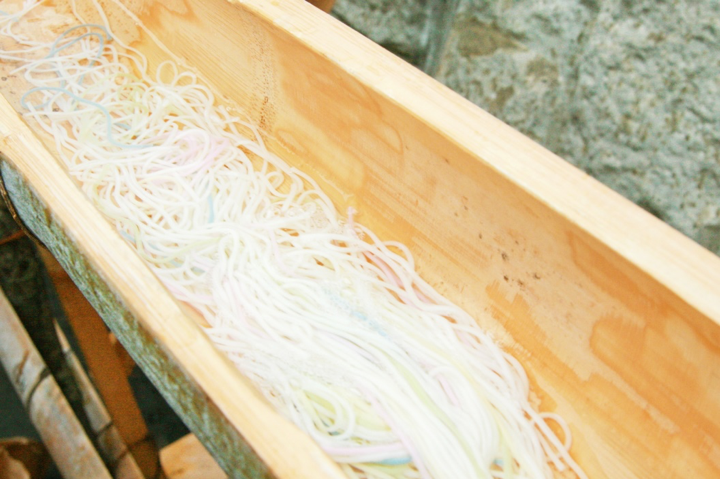
credits – photo AC
Somen noodles are very thin noodles made of wheat flour that you dip into soup in another bowl and eat. They are mostly eaten cold during the summer period when people lose their appetite. Somen noodles can smoothly slide down your throat so you can enjoy having them even when you don’t feel like eating anything. It is also very easy to cook!
Nagashi somen is one of the Japanese summer traditions that is very fun to try! We usually use real bamboo pipes to flow somen noodles with cold flowing water. You have to catch them with chopsticks when they come down to your spot to grab your own somen. When you catch yours, dip them into your soup bowl and enjoy them. When they use real bamboo pipes, you can feel the bamboo scent in your mouth which is quite nice. Also, Nagashi Somen is often served outdoor where you can cool down your body from the blazing heat. It feels refreshing to have cold nagashi somen in the nature. It’s definitely worth a try!
Recently there are many types of pipes such as plastic. You cannot feel the bamboo scent but plastic pipes make it easier to have Nagashi-somen for everyone. You can even find Nagashi-somen home electrical appliances for families!
5. Unagi (Eels)
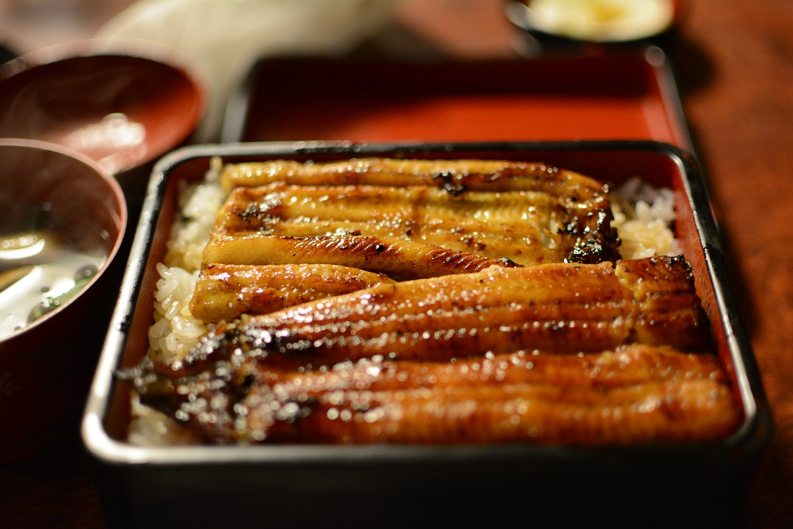
Eels are quite rich in nutrients and have been a famous summer food in Japan for a long time. Eels contain a lot of protein, Vitamin A, B1, B2, D and E, DHA, EPA, and minerals. We have eels to prevent summer heat fatigue every summer on a day called “Doyo no Ushi no hi”. This day is different every summer, and sometimes it occurs twice a summer.
The major cooking method of eels is glaze-grilled called Kabayaki. Glaze-grilled eels are soft and juicy inside with a little crispy outside skin. The sauce is soy sauce based and it tastes sweet and thick. If you order eels at a special restaurant, they will also serve a clear soup called Kimosui with the guts of the eel as a main ingredient. It tastes quite mild but also rich in nutrients.
6. Tako (Octopus)
Have you tried Octopuses so far? Lately Octopus balls called Takoyaki have become quite popular so you might have tried them. Octopuses are chewy and tasty. You might be addicted to its mysterious but nice taste once you eat them. Other than Takoyaki, the main way we eat them during summer is vinegar seasoned dish. We serve them with some seaweed and sliced cucumber. Having very thin sliced octopus like sashimi is also very good.
They are rich in Taurin that helps our cells work properly. That is why Octopuses are good to eat when hot. In the west part of Japan after the rice planning season, octopuses have been used as offerings to God when praying for a good harvest. After that they have been eating octopuses.
7. Hamo (pike conger)
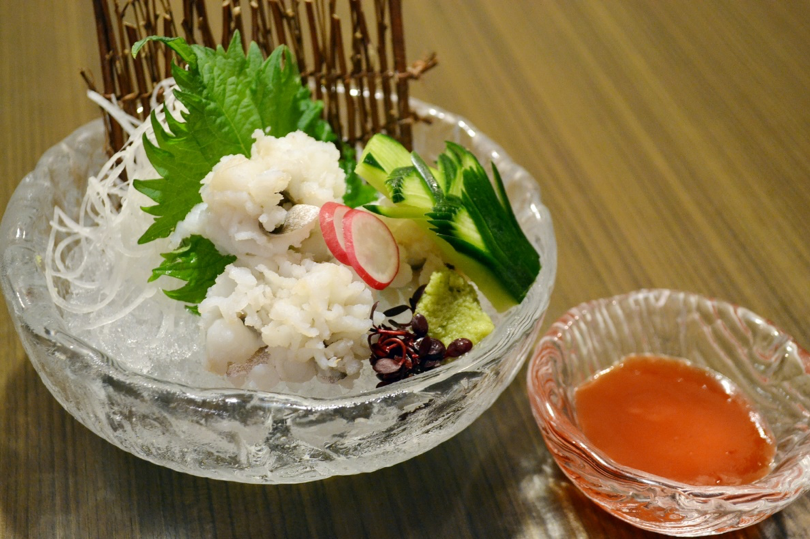
Hamo is a long fish like eels, but they are not as thick as eels. Hamo is often used in expensive dishes in west part of Japan, especially Kyoto although people in other parts of Japan do not eat them as much. The fish itself has many bones, but cooks cut only bones without cutting through the outer skin so that we can enjoy the fish without being bothered by the bones. The taste itself is quite plain. The most popular dish of Hamo is Yukibi (slightly boiled style) often served on ice. Then we eat Hamo with a dipping of Japanese pickled plums or Sumiso (Miso paste with vinegar etc).
I have introduced you some of the representative Japanese summer dishes so far There are a lot more I could not mention about today. There are also good summer treats I would like to introduce you soon. I hope you find your own favorite summer food during your stay in Japan and enjoy and survive this hot and humid climate! Have a nice stay!
Yokoo51/Japan

